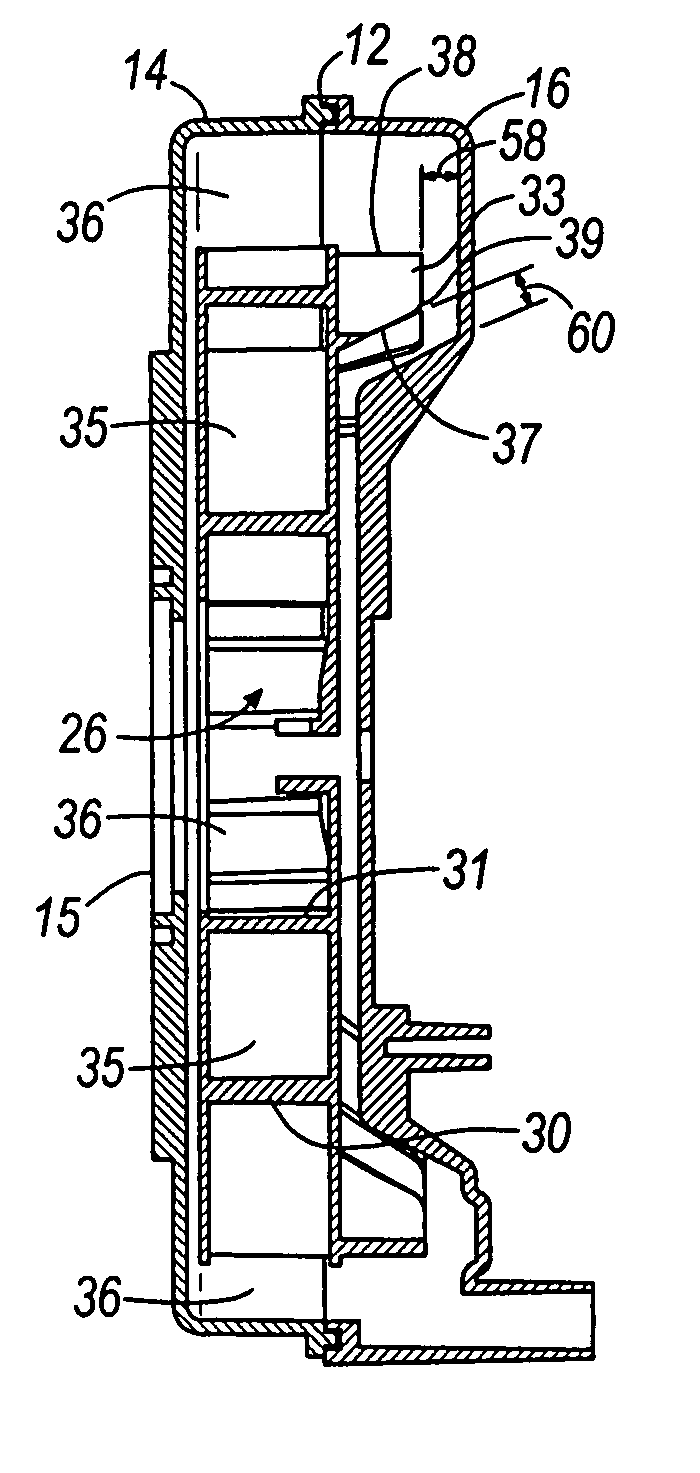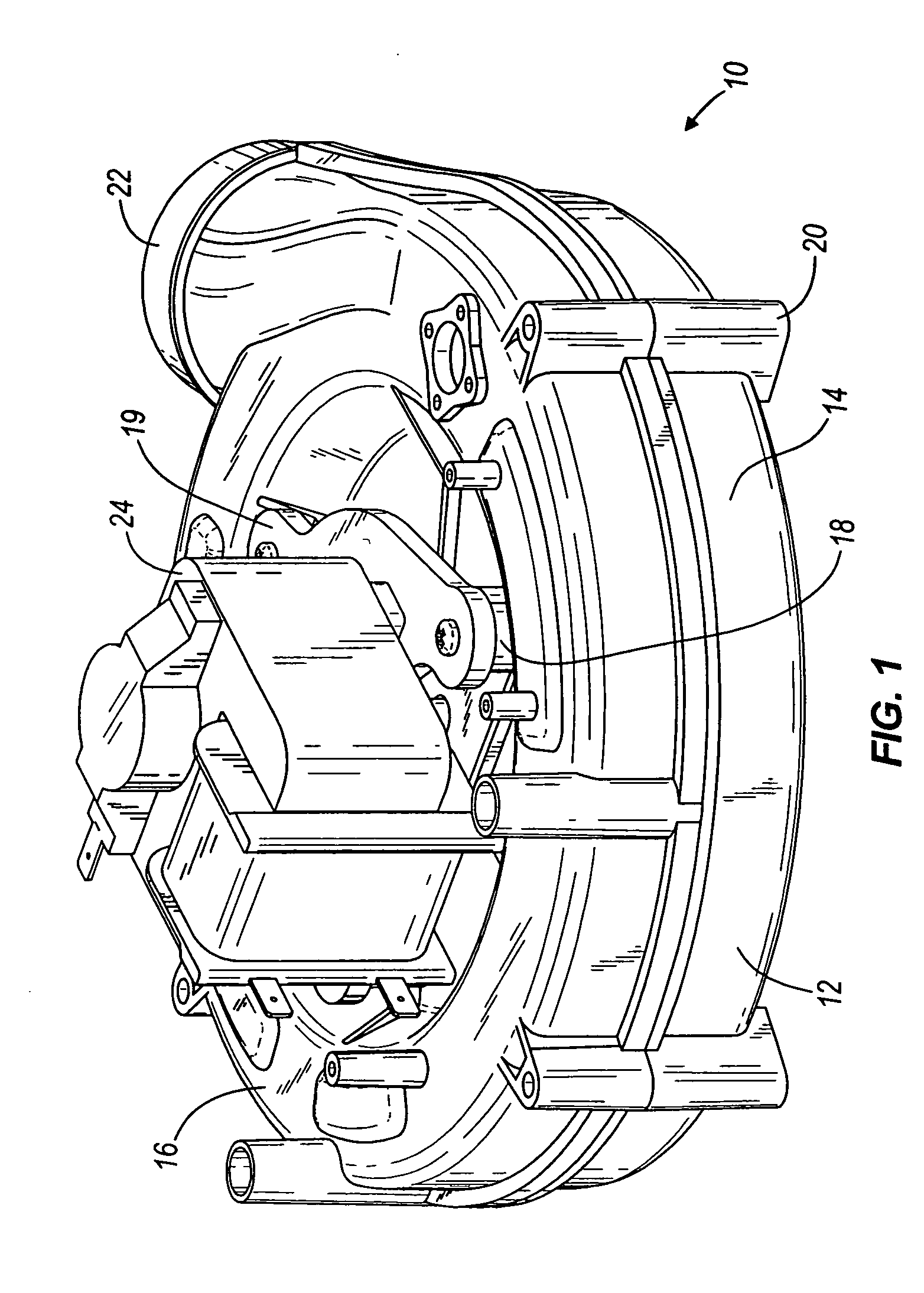Centrifugal fan
a centrifugal fan and fan assembly technology, applied in the direction of machines/engines, stators, liquid fuel engines, etc., can solve the problems of reducing the efficiency of the fan assembly, affecting the pressure-producing capabilities and and many centrifugal fans suffering from inefficiency problems, so as to improve improve the performance of the fan. , the effect of improving the efficiency of the fan
- Summary
- Abstract
- Description
- Claims
- Application Information
AI Technical Summary
Benefits of technology
Problems solved by technology
Method used
Image
Examples
Embodiment Construction
[0029] As illustrated in FIGS. 1 and 2, a fan assembly 10 according to an exemplary embodiment of the present invention comprises a housing 12 and an impeller 26 contained at least partially within the housing 12. A motor 24 can be mounted to the housing 12 and can be drivably connected to the impeller 26 in any conventional manner to rotate the impeller 26 in the housing 12. As discussed above, the housing 12 can be a substantially scroll-shaped housing forming an air passage 36 through which air flows. The housing 12 can be constructed in two or more portions 14, 16 to facilitate easy assembly. For example, as shown in FIG. 2, the housing 12 of some embodiments is formed in two portions 14, 16. The first portion 14 can contain an air inlet 15 to allow air to enter the fan 10 axially. The second portion 16 can provide a mounting surface for the motor 24. When the housing 12 is fully assembled, the impeller 26 is at least partially contained within the two portions 14, 16 of the hou...
PUM
 Login to View More
Login to View More Abstract
Description
Claims
Application Information
 Login to View More
Login to View More - R&D
- Intellectual Property
- Life Sciences
- Materials
- Tech Scout
- Unparalleled Data Quality
- Higher Quality Content
- 60% Fewer Hallucinations
Browse by: Latest US Patents, China's latest patents, Technical Efficacy Thesaurus, Application Domain, Technology Topic, Popular Technical Reports.
© 2025 PatSnap. All rights reserved.Legal|Privacy policy|Modern Slavery Act Transparency Statement|Sitemap|About US| Contact US: help@patsnap.com



